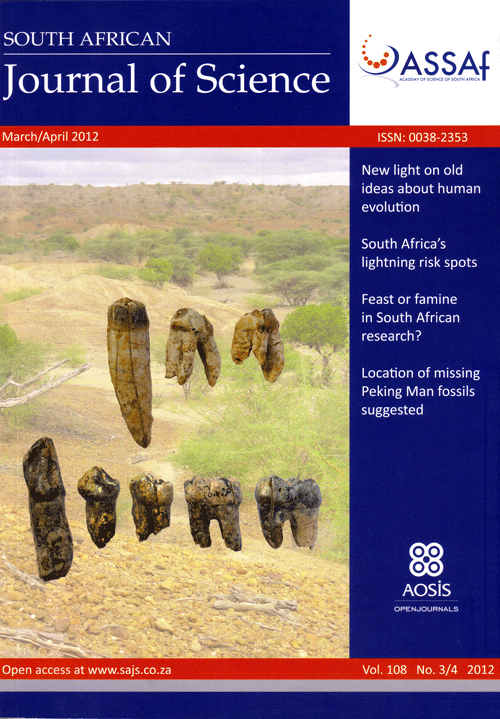Detection and molecular identification protocols for Phyllosticta citricarpa from citrus matter
Abstract
Strict quarantine measures for the export of South African citrus fruit to European and US markets require the development of sensitive and accurate detection methods for the pathogen Phyllosticta citricarpa - a fungus causing citrus black spot disease. Because of the presence of other, non-pathogenic Phyllosticta species, rapid and accurate verification of the Phyllosticta species present on exported citrus fruit is important to producers, exporters and regulatory authorities to prevent unnecessary losses. We have analysed over 800 samples collected over 7 years and have compared sample preparation and detection protocols applied in different environments: nurseries, production systems including phytosanitary inspections in orchards, pack houses and export terminals in order to compile protocols for the detection of P. citricarpa. Standard procedures of sample preparation and DNA extraction were adapted to suit diverse inoculum sources. Low pathogen numbers in symptomless green leaves, for example, obliged the use of a wet-dry enrichment technique constituting the stimulation of fungal growth for easier detection. Physical maceration was adapted for sturdy material using liquid nitrogen or bead beating. The use of a two-step polymerase chain reaction (PCR) with nested primers significantly increased both the sensitivity and the specificity of the PCR performed on soil samples, overcoming problems with relatively impure DNA extracts and low pathogen numbers. The assays have proven to be highly consistent, thereby providing a reliable, reproducible and highly sensitive detection and diagnostic service to the southern African citrus industries in order to sustain market access.
Downloads
Published
Issue
Section
License

All articles are published under a Creative Commons Attribution 4.0 International Licence
Copyright is retained by the authors. Readers are welcome to reproduce, share and adapt the content without permission provided the source is attributed.
Disclaimer: The publisher and editors accept no responsibility for statements made by the authors
How to Cite
- Abstract 228
- PDF (527 KB) 156
- HTML 218
- EPUB 126
- XML 88
- Figure 1 0
- Figure 2 0
- Figure 3 0
- Table 1 0












.png)